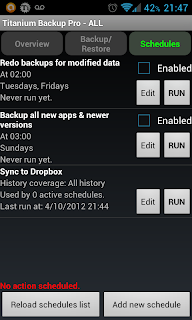Or more specifically after parsing this, thanks Noles ;).
Personally, I think under that context, Oracle will likely win. I do not believe that a language /should/ be copyrighted but that they technically can be, think about how the types involved might mix for various copyrighted works.
I’ll be the first to admit that our system for copyright, patents, intellectual property, trademarks, and the like is a maze with more than a few turns just full of bullshit. But let’s think a moment: what is it really about? Money. It’s not about fostering innovation (patents) or controlling your property (oi). It’s about money. That’s it, simple.
Java is a product and a creative work, sufficient to be copyrighted. So is the GNU Compiler Collection and that last book you read.
What is the jist of copyright? Wikipedia as of this writing, defines it as a sub class of Intellectual Property that is generally “the right to copy, but also gives the copyright holder the right to be credited for the work, to determine who may adapt the work to other forms, who may perform the work, who may financially benefit from it, and other related rights”
Java, as it applies to Android, is not very different than any other language applied to other systems. The devil is in the details as they say. An Android application is a collection of Dalvik bytecode, native code, and resources running under the Dalvik virtual machine: and Android provides a runtime.
The implementation is not “Java” as Oracle ships it. In fact, as Microsoft’s various efforts to make a .NET dialect of C++ and projects like JRuby confirm: you can have a fair bit of abstraction between *concept* and implementation. Android developers typically write code in Java to an interface documented in Java. They could just as easily write in any language you can eventually wrangle into Dalvik bytecode! Android applications can and have been written in other JVM languages, and non JVM languages. The interface, well hell, many things in the .NET world are done in C# but you could just as easily use Visual Basic or F#. Really helps to be able to read C# though. Just like how on many systems, it helps to be able to read C and or C++.
That runtime part that Android applications depend on is quite “Java like”. Many intrinsic components are provided. C programmer’s should think of the stdio library. Because that is the sort of thing that has been “Copied” from “Java”. Essential programming interfaces, not implementations but interfaces (as far as Oracle holds right to). GNU implements C’s I/O library in their runtime. So does Microsoft in their own. They didn’t have to supply crap like printf() and puts(), they could’ve supplied their own pf() and IoConsolePutLStr() functions! Nether group owes the other jack shit over that. But hey, printf() and puts() are what are widely used: even in other languages!!!!
A lot of things in Androids runtime are also unique. For example, the parts that make it Android specific rather than able to compile under Oracles development kits for PC. The implementation is not copied but the conceptual interface, yes.
So that’s a problemo, how far does that level of control and ownership apply to derivatives? And what actually constitutes a derivative work?
Is copying the script of a movie scene for scene, line for line, and reshooting it for your own release and profit, an issue? Yeah. Obvious. Is doing a movie about a train, going to allow whoever owns copyright on some other movie with a train, to sue your ass for it? It shouldn’t unless it’s close enough to the former, or similarly having a legal problem of some other sort.
It’s more of a question like, should Matz and Oracle be able to sue the developers of JRuby for copyright infridgement: because it provides an even stronger resemblance to both Ruby’s and Java’s programming interfaces than Android’s runtime does to Java’s. Things like C, C++, C#, Common Lisp, Scheme, and EmcaScript are formally standardized to some extent. Things like Java, Python, Perl, Ruby, and Lua are not. Could Niklaus Wirth (or Apple) have sued Boreland over Delphi?
I do not feel that it is responsible to exercise such strong-arm aggression against users. It’s bad for Java, it’s bad for business, it’s bad for the continuing evolution of the industry, and it’s bad for those who have already invested.
And as far as I am concerned, enough programming languages “Borrow” stuff that applications of copyright the way Oracle must be seeking, or not feasible—and may very well fuck up language development for the next decade. Now we have to worry what the fuck we name our classes? What next, companies are going to start exerting control over _our_ works made with their tools?
Thanks Oracle, hope your stock plummets and your employees find good jobs with businesses that offer better job security.
